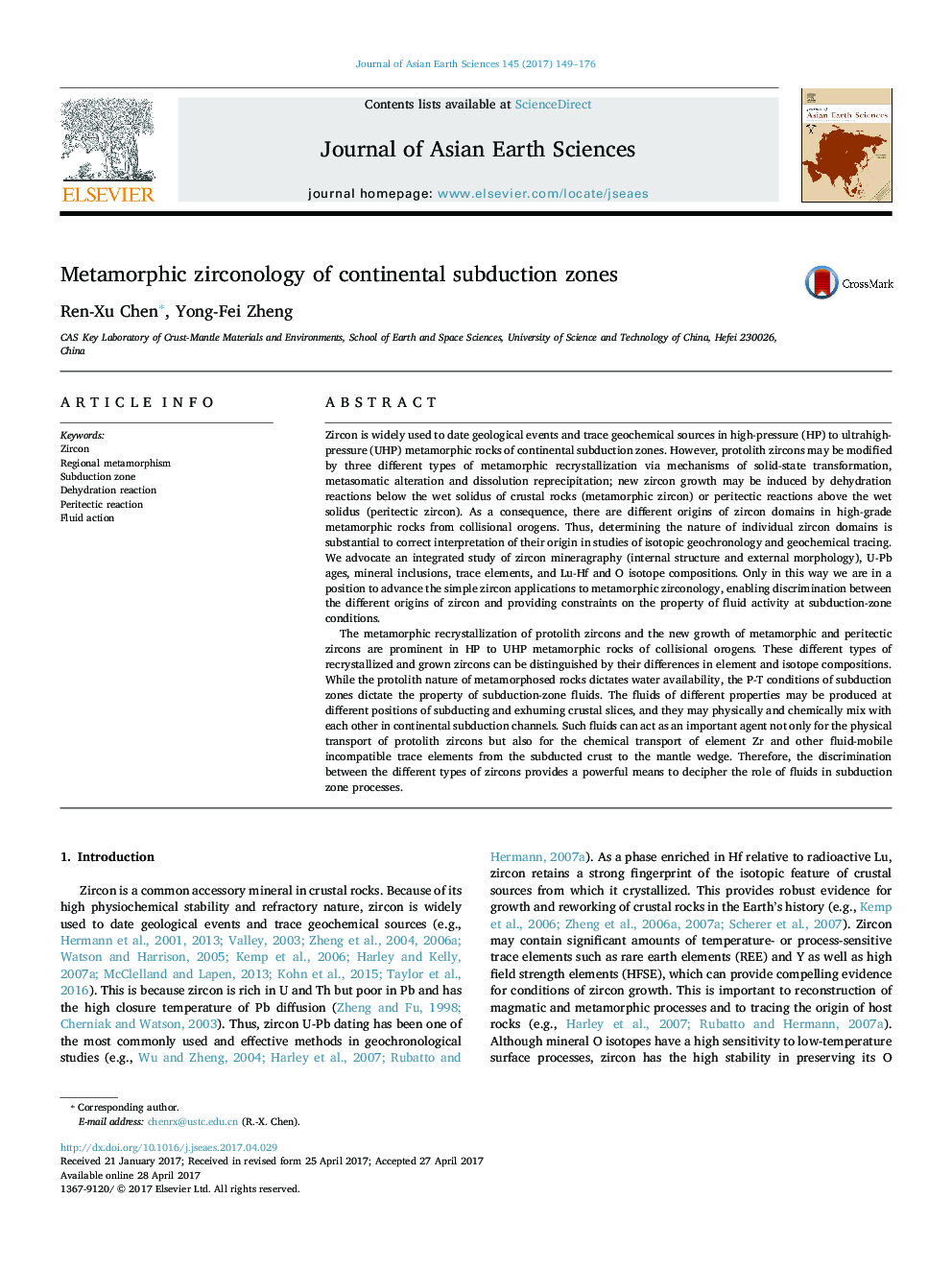| کد مقاله | کد نشریه | سال انتشار | مقاله انگلیسی | نسخه تمام متن |
|---|---|---|---|---|
| 5785955 | 1414092 | 2017 | 28 صفحه PDF | دانلود رایگان |
- Protolith zircons may be modified by solid-state transformation, metasomatic alteration and dissolution reprecipitation.
- New zircon growth occurs via either metamorphic or peritectic reactions depending on temperature.
- Different types of zircon can be distinguished by their differences in geochemical compositions.
- Property of protolith zircon and behaviors of Zr-bearing minerals dictate the new growth of zircon.
- A zirconological study has the advantage to date geological events and trace geochemical sources.
Zircon is widely used to date geological events and trace geochemical sources in high-pressure (HP) to ultrahigh-pressure (UHP) metamorphic rocks of continental subduction zones. However, protolith zircons may be modified by three different types of metamorphic recrystallization via mechanisms of solid-state transformation, metasomatic alteration and dissolution reprecipitation; new zircon growth may be induced by dehydration reactions below the wet solidus of crustal rocks (metamorphic zircon) or peritectic reactions above the wet solidus (peritectic zircon). As a consequence, there are different origins of zircon domains in high-grade metamorphic rocks from collisional orogens. Thus, determining the nature of individual zircon domains is substantial to correct interpretation of their origin in studies of isotopic geochronology and geochemical tracing. We advocate an integrated study of zircon mineragraphy (internal structure and external morphology), U-Pb ages, mineral inclusions, trace elements, and Lu-Hf and O isotope compositions. Only in this way we are in a position to advance the simple zircon applications to metamorphic zirconology, enabling discrimination between the different origins of zircon and providing constraints on the property of fluid activity at subduction-zone conditions.The metamorphic recrystallization of protolith zircons and the new growth of metamorphic and peritectic zircons are prominent in HP to UHP metamorphic rocks of collisional orogens. These different types of recrystallized and grown zircons can be distinguished by their differences in element and isotope compositions. While the protolith nature of metamorphosed rocks dictates water availability, the P-T conditions of subduction zones dictate the property of subduction-zone fluids. The fluids of different properties may be produced at different positions of subducting and exhuming crustal slices, and they may physically and chemically mix with each other in continental subduction channels. Such fluids can act as an important agent not only for the physical transport of protolith zircons but also for the chemical transport of element Zr and other fluid-mobile incompatible trace elements from the subducted crust to the mantle wedge. Therefore, the discrimination between the different types of zircons provides a powerful means to decipher the role of fluids in subduction zone processes.
215
Journal: Journal of Asian Earth Sciences - Volume 145, Part A, 1 September 2017, Pages 149-176
